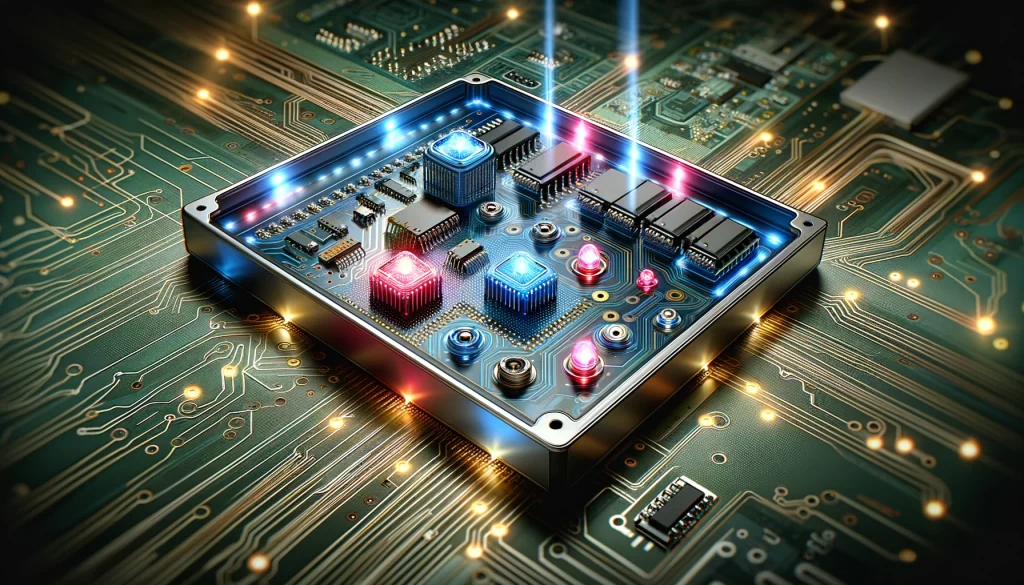Introduction
Hey there, design enthusiasts and tech gurus! Today, let’s talk about something that’s revolutionizing the way we develop electronic products – rapid prototyping in membrane switch design. It’s not just a buzzword; it’s a game-changer in turning ideas into tangible, testable products quickly and efficiently.
The Essence of Rapid Prototyping
What is Rapid Prototyping?: It’s a process that allows designers and engineers to create physical prototypes of their designs quickly and accurately, using advanced technologies like 3D printing and CNC machining.
Why It Matters in Membrane Switch Design: In the world of membrane switches, where functionality and user experience are paramount, rapid prototyping enables designers to experiment, test, and refine their ideas in real-time.
Speeding Up the Design Process
From Concept to Reality: Rapid prototyping accelerates the development process, allowing designers to move from digital models to physical prototypes in a matter of hours or days, not weeks or months.
Iterative Design: This speed supports an iterative design process. Designers can test, receive feedback, and make improvements in rapid succession, honing the product to perfection.
Enhancing Creativity and Innovation
Unleashing Design Potential: With fewer constraints on the prototyping process, designers are free to explore innovative ideas and complex designs that were previously hard to visualize and test.
Customization at Its Best: For products that require a high degree of customization, like membrane switches in specialized equipment, rapid prototyping is invaluable.
The Impact on Functionality and User Experience
Testing Tactile Feedback: Membrane switches are all about the tactile experience. Rapid prototyping allows designers to create and test different dome shapes, materials, and layouts to get the perfect feel.
Real-World Simulation: Prototypes can be tested in simulated real-world conditions to assess their durability, response, and effectiveness, ensuring the final product performs as intended.
Cost-Effectiveness and Efficiency
Reducing Development Costs: By catching design flaws early and reducing the time to market, rapid prototyping can significantly cut development costs.
Lean Manufacturing Approach: Rapid prototyping aligns with lean manufacturing principles, minimizing waste and focusing on value-added activities.
Case Studies: Success Stories in Rapid Prototyping
1. Innovative Consumer Products: Revolutionizing Game Controllers
- Background: A consumer electronics company aimed to launch a new game controller with an innovative membrane switch layout that offered gamers a more intuitive and responsive experience.
- Challenge: The design was complex, featuring an ergonomic shape and multi-level tactile feedback that hadn’t been attempted before.
- Rapid Prototyping in Action: Using 3D printing, the company quickly developed multiple prototypes, each with slight variations in the membrane switch design. This included experimenting with different dome shapes and actuation forces.
- Testing and Feedback: Prototypes were tested with focus groups of gamers. Their feedback on the tactile response and ergonomics was used to make incremental improvements.
- Outcome: The final design, honed through multiple rapid prototyping iterations, led to a highly successful product launch. The controller was praised for its innovative design and superior user experience, setting a new standard in the gaming industry.
2. Medical Device Breakthroughs: Enhancing Patient Monitoring Equipment
- Background: A medical device manufacturer was developing a new patient monitoring system that required a highly sensitive and reliable membrane switch for its interface.
- Challenge: The switch needed to be precise yet durable enough to withstand constant use in a medical environment. It also had to be easy to sanitize without damaging the switch’s sensitivity.
- Rapid Prototyping in Action: The company utilized rapid prototyping to experiment with various materials and designs. They focused on creating a membrane switch that could provide accurate readings even under the pressure of light touches.
- Real-World Testing: Prototypes were tested in simulated medical environments to ensure they met the rigorous standards required for medical equipment.
- Outcome: The perfected membrane switch, achieved through rapid prototyping, was instrumental in the success of the new patient monitoring system. It offered enhanced sensitivity and durability, contributing significantly to the device’s accuracy and reliability in critical medical settings.
The Future of Rapid Prototyping in Electronic Design
Next-Gen Technologies: The future looks bright with advancements in rapid prototyping technologies, promising even more speed, precision, and material options.
Sustainability and Eco-Friendly Practices: As we advance, there’s also a growing focus on making rapid prototyping more sustainable and environmentally friendly.
Conclusion
Rapid prototyping in membrane switch design is more than just a tool; it’s a pathway to innovation, efficiency, and excellence in product development. As designers and engineers, embracing this approach opens up endless possibilities, helping us create products that are not just functional but also delightful to use.




